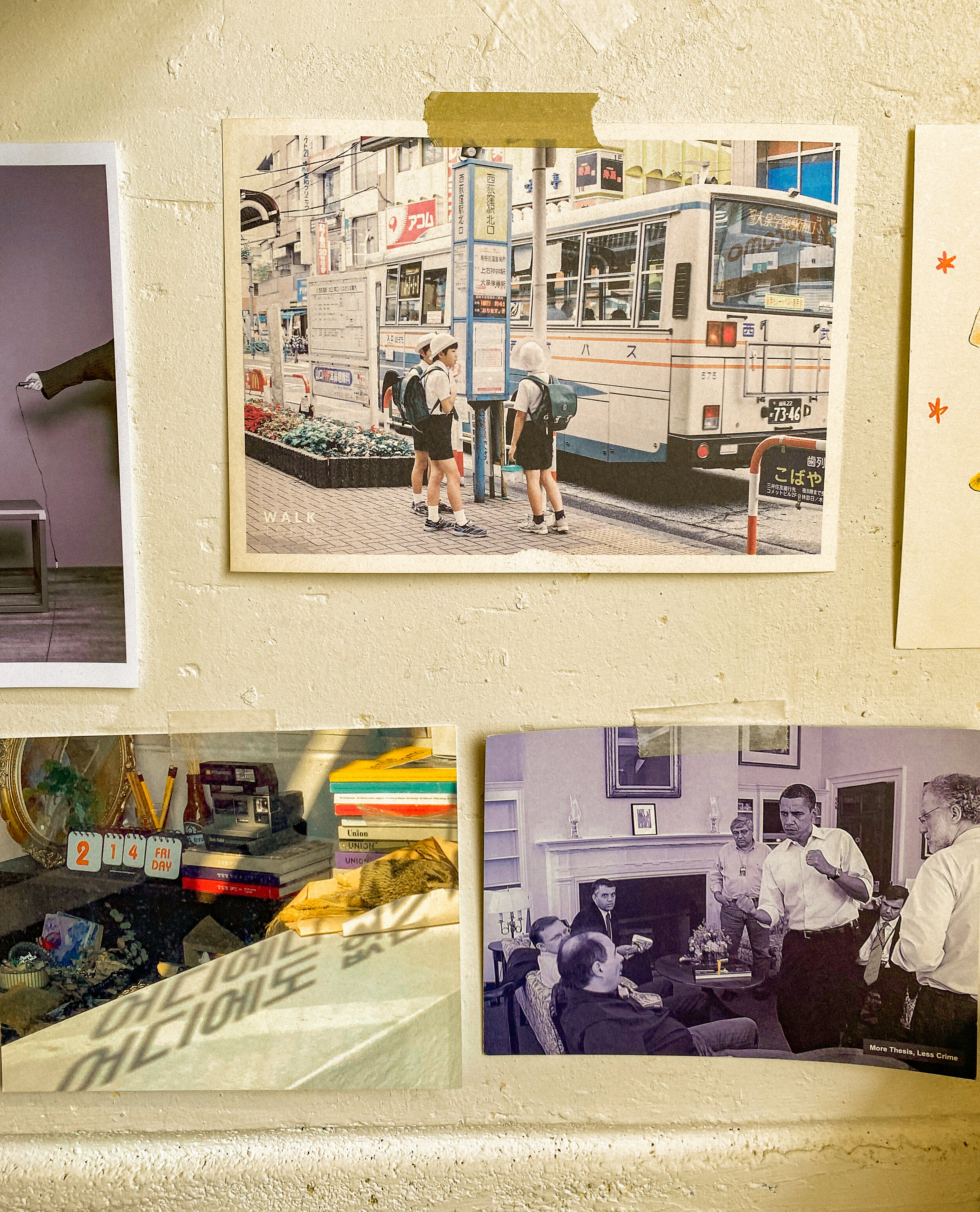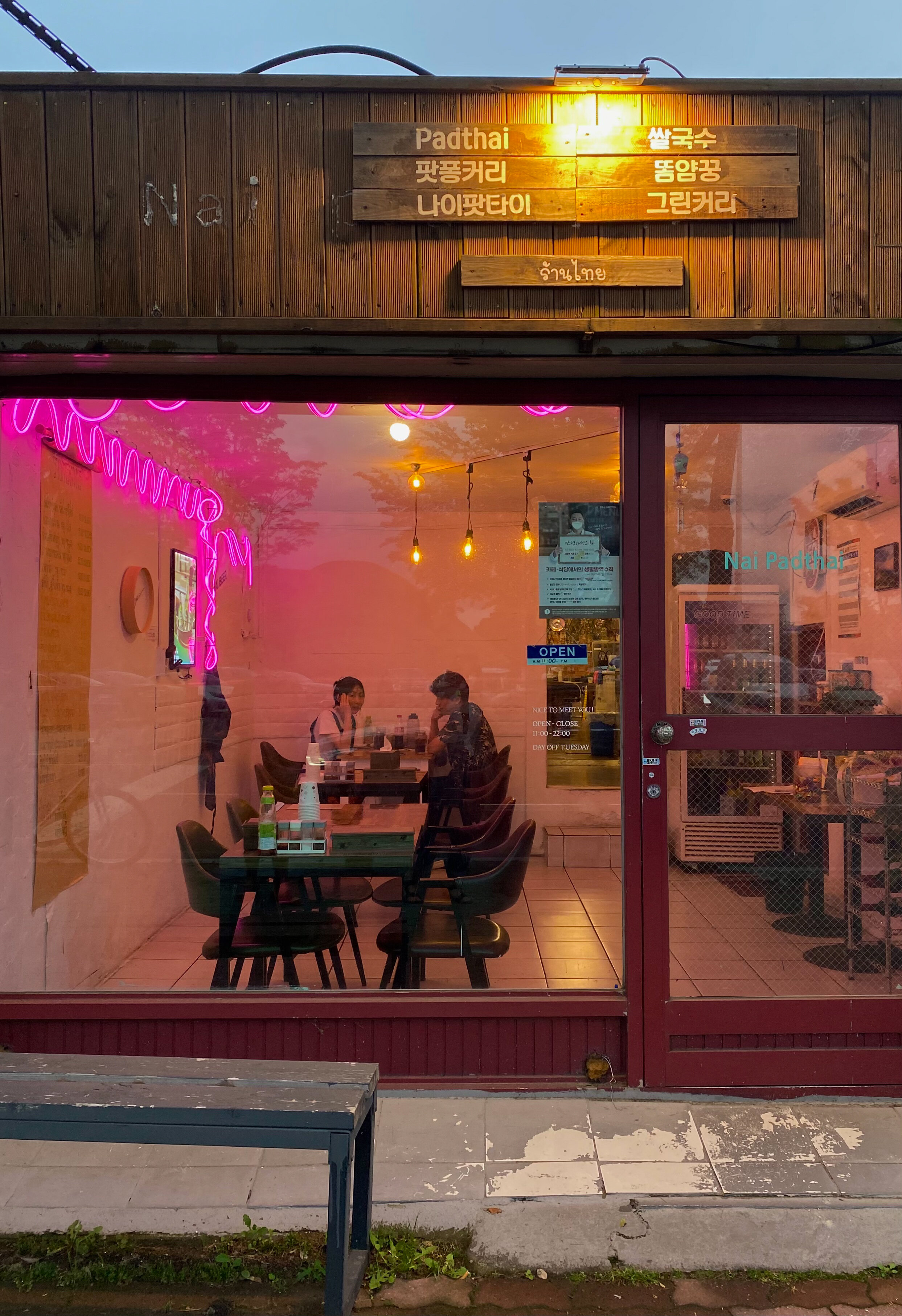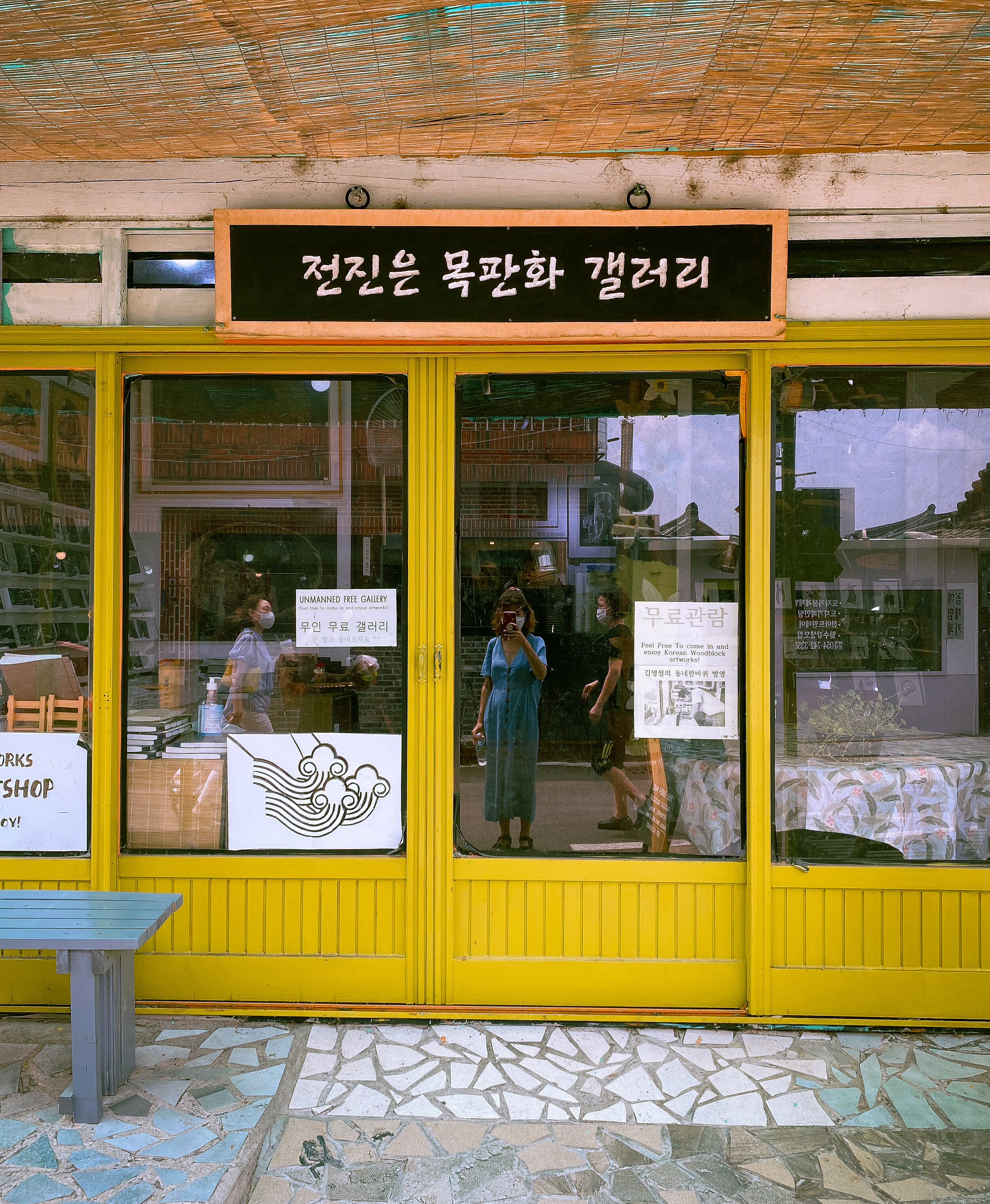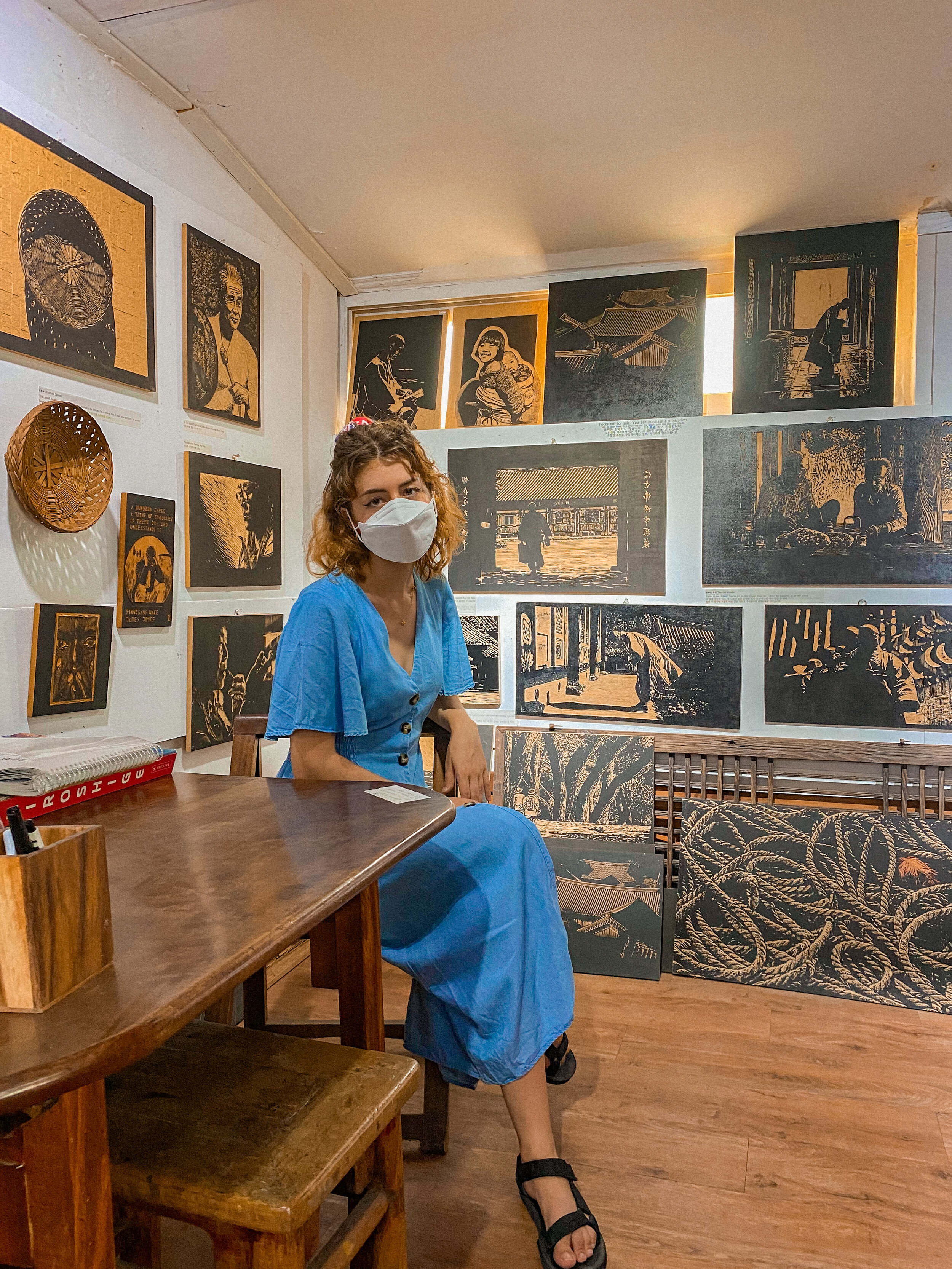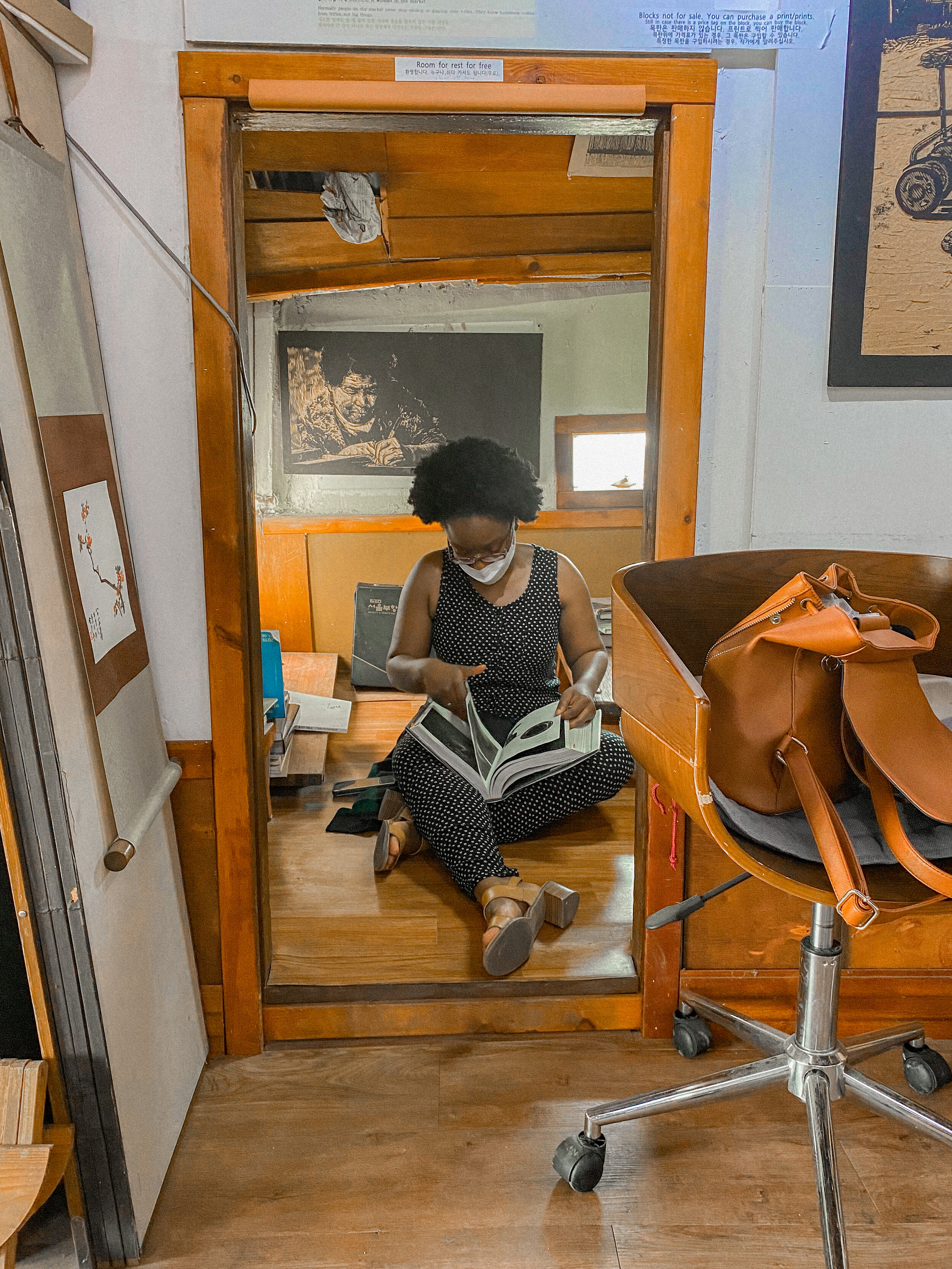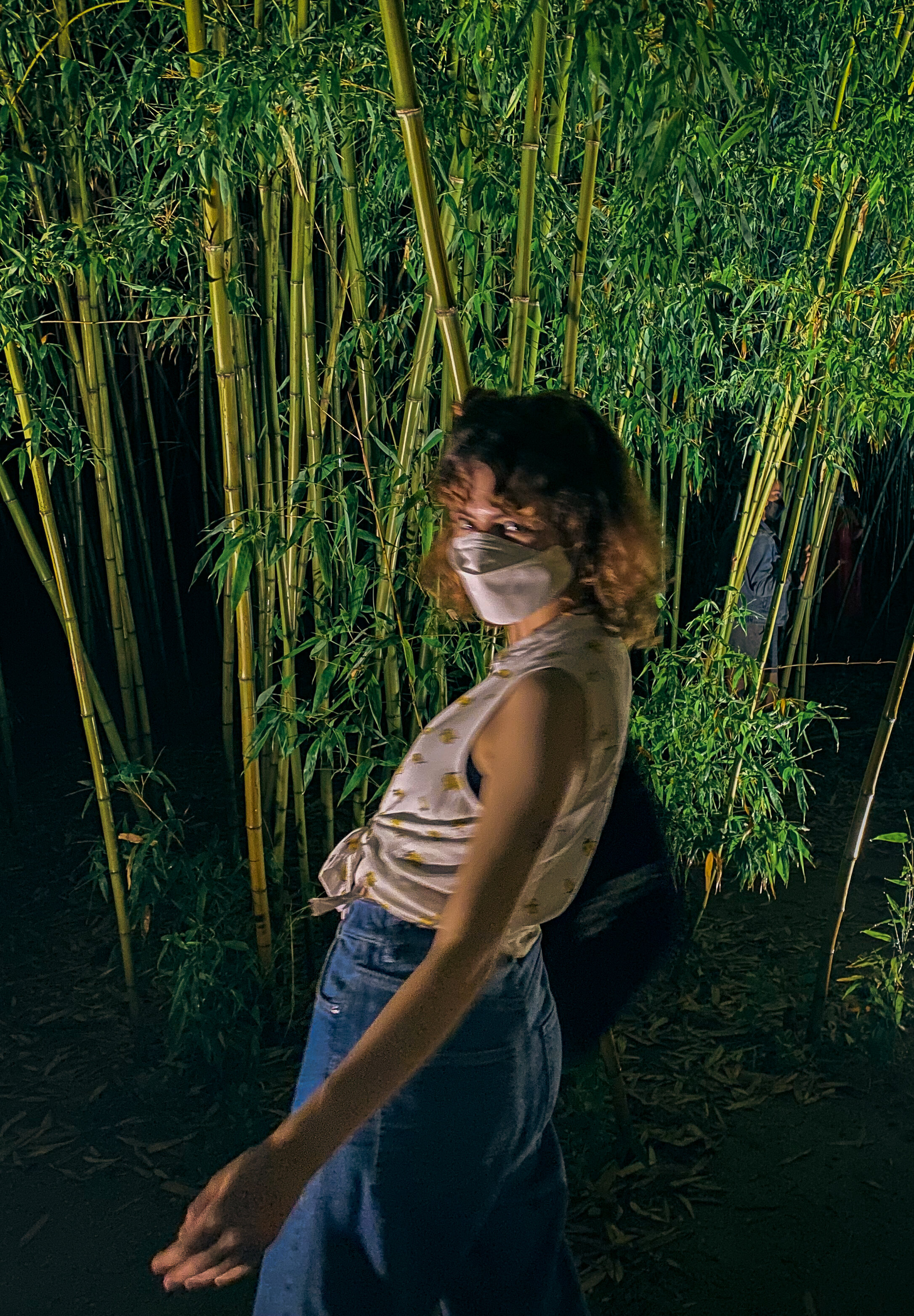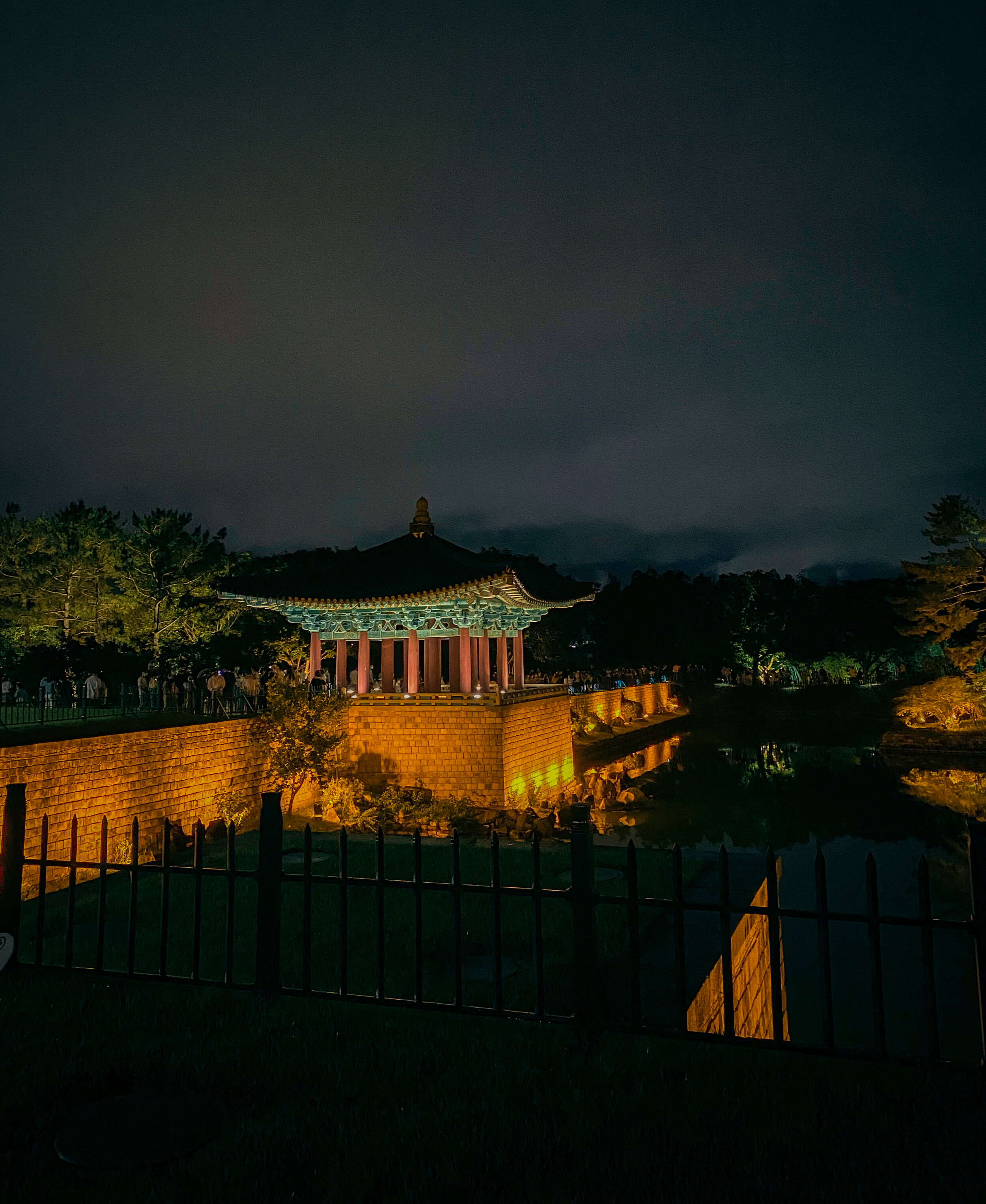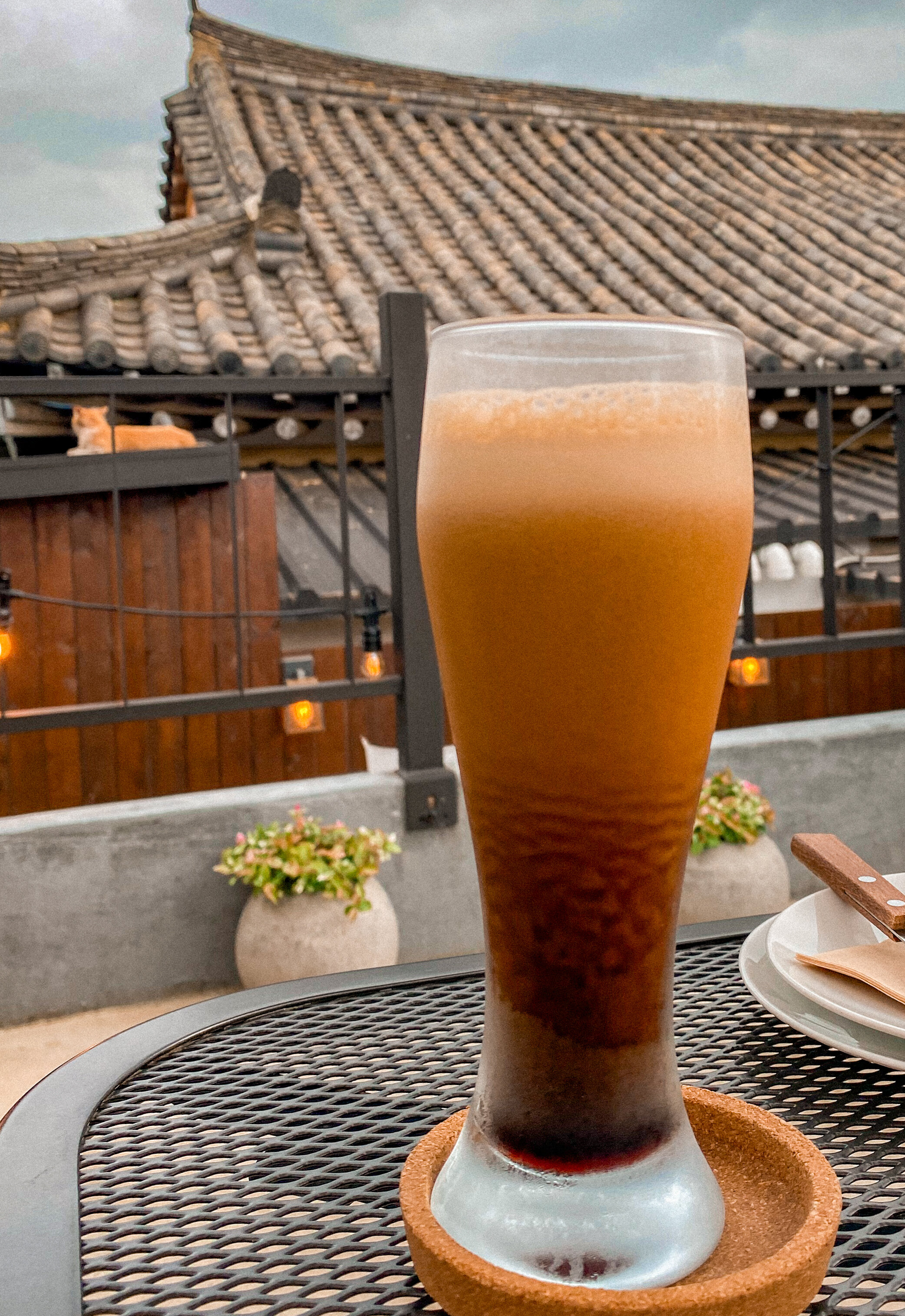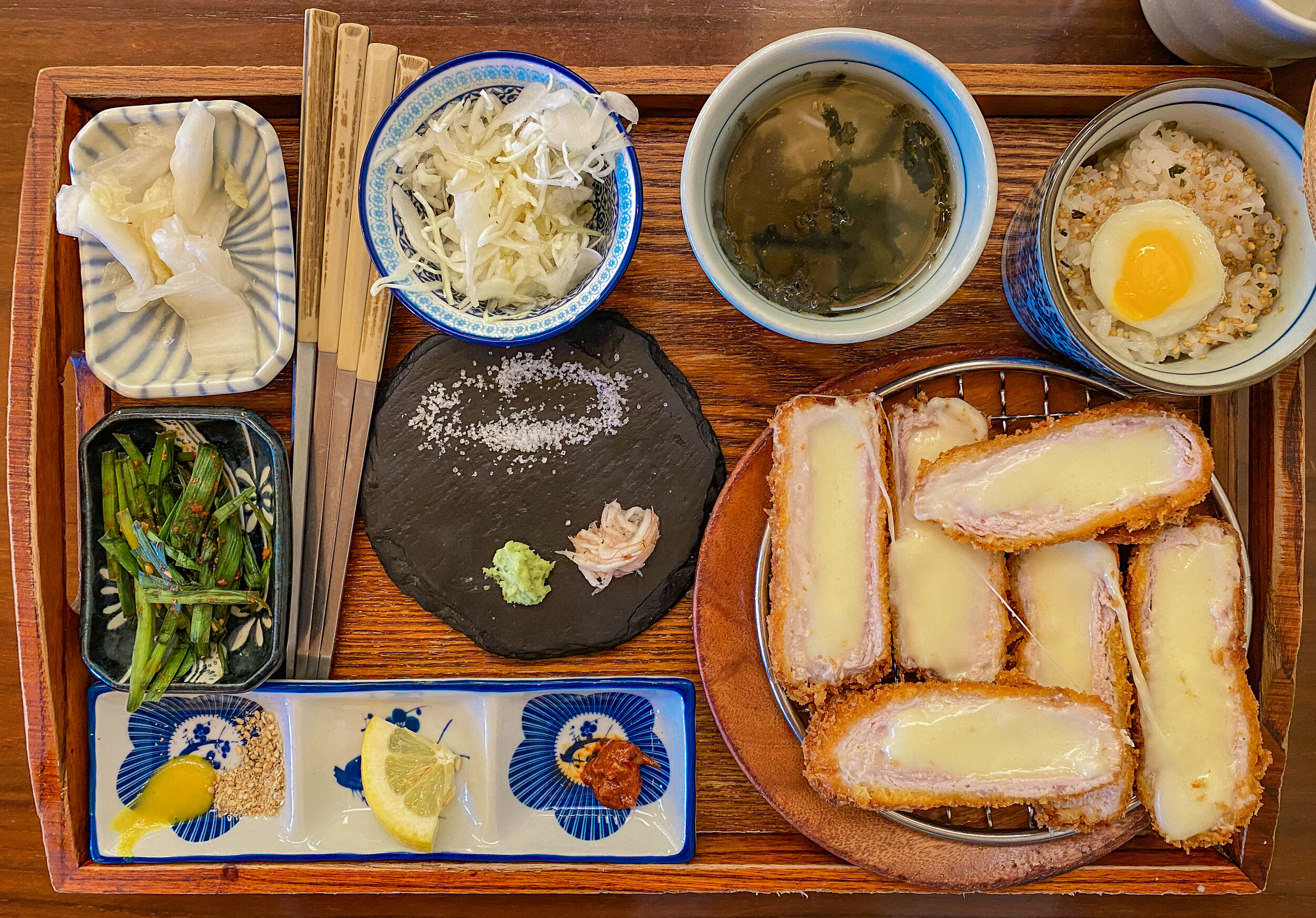Gyeongju & the Quest for Authenticity
Sorry but not sorry for the Harry Potter title.
Once the capital of the Silla empire, Gyeongju is an East coast city lauded for its traditional Korean culture, dotted with giant hills—the tombs of ancient kings.
My friend and I took a little weekend trip back in June. The thing about Gyeongju is there’s enough to do that a day trip feels a bit rushed, but not so much that two full days is very relaxed. We arrived at around noon, bussing past rice paddies and Burger Kings built in hanok-style buildings. We dropped off our stuff and walked (yes, another walkable city!) to the main strip. Little rainstorms would come in strong half-hour bursts. The humidity made us feel sticky and lethargic, but we were just grateful when it wasn’t pouring.
The main strip of Gyeongju, where all the tourists flock, is a grid of hanok buildings. Most, nearly all, are brand new, with huge windows and wood still bright and freshly stained. The town would be flat if it weren’t for the overlooking, old tombs. My friend told me that Gyeongju is the only city in Korea that mandates no looming apartment buildings can be built. She wasn’t totally sure she was right until views proved it; there were indeed no buildings blocking the mountains.
Like any travel spot, there was the requisite list of must-dos: You can get your Korean street food, all the twigim (fried stuff), and Gyeongju’s famous, hwangnam pang, red bean buns. There’s retro brunch spots, outdoor dispensers to grab your paper fortune, and many, many cafes. We rented bikes, which proved to be a waste of time because all of Gyeongju is walkable in, like, 5 minutes.
We paid for our tickets to the gated tombs, which were neck-crampingly huge and mindbogglingly old. Each one was practically 2,000 years old. You’re not allowed to climb them, of course. Punishable by law. I wondered when and how they mow the grass up top.
For our dinner, I sought out the Thai place just off the main strip that my fellow blogger, Angel, had written about in her own blog, Angel in Transit. In an excellent and thought-provoking piece, she wrote about the gentrification of Gyeongju, and how it represents the larger woes of tourism we see across the globe.
This town, like many Korean tourist spots, is catered to modern comforts with the dressings of the wistful past…i.e., boutique wine bars and minimalist cafes; luxury hotel stays which cost outside the average Korean income earner’s comfort zone—all built into renovated traditional homes. Gyeongju is authentically Korean, so the branding goes. As Angel put it, the marketing and perhaps the appeal of these towns, like Gyeongju and Andong and Jeonju, are that they are ostensibly less entangled with the Westernness you find in bigger cities. Pizza places aside, of course. To Angel, the scene felt hollow and, worse, exploitative:
“Patronage of businesses catering to wealthy visitors is an unwitting contribution to gentrification and overall demarcation of the very thing one hopes to experience and enjoy.”
She sought instead something that did feel authentic, something less readily packaged for the visual internet.
And I think that’s what drew me to the Thai place as well. That, and very good curry.
For myself, I don’t know how I feel about using the word “gentrification” for Korean contexts—that word itself seems so American-ized to me, something very inextricable with the long history of racial discrimination of the US. Not to say that we can’t use that term in non-US contexts or that discriminatory housing overhauls are impossible here in Korea. Certainly not….just that I’ve only ever seen it applied in a Western context, so I’m hesitant to apply it here.
The key to gentrification is its exploitation and displacement—the act of making it unaffordable for the old inhabitants to stay.
Many, if not all, of these converted homes or land were abandoned before. So my first reaction is to ask, naively, is there harm being done? Or is this another Miracle on the Han, a form of “economic advancement”?
As I write this, I suddenly think of my coworkers’ excitement about the acres of pre-war hanok buildings in Daejeon, bulldozed to the ground for new apartment complexes. Or the fields near my school, full of summer flowers, dug up by Seoul investors just last week. The magnolia tree that was first to bloom every spring is now gone.
(As an anecdotal aside, I suspect the Korean relationship to development might be different than it is in America. I remember discussions of dictators in the 80s, who were terrible but some of my Korean coworkers equivocate that they at least spurred huge economic advancements. As I leave Korea, how can I help but wonder what Daejeon will look like in a year, two, five, ten? Will it look anything like what it used to?)
Maybe gentrification is the best word we have for these phenomena, even if it does feel like trying to push a rectangle block into a circular hole. Maybe it does apply to Gyeongju and all the other towns the Korean Tourism Board is pushing in a competition for the “most Korean city.”
On our second day, we found a gallery in an old home. It was empty and filled with gorgeous wood block art. Dozens and dozens—maybe a hundred or more—wood blocks starring people, streets, hands.
The artist wasn’t there, but he had notes all over, even translated to English. He wrote about his journey as an artist, and why he loved to chip people’s faces into wood. My friend and I spent an hour resting on cushions in a little room, too small to stand up straight.
I really can’t express how much I loved this place. You could just tell the artist had a genuine love for people. I slipped two thousand won into the donation box and took a postcard of a halmoni he’d met in the fish market.
This place struck me as the Thai place did Angel—a place of genuine human connection, even though there was not a soul but us inside.
I don’t know what makes something authentic or not until it hits me square in the jaw. More often than not, I’m left with more questions than answers.
The rest of Gyeongju followed the travel list—we headed to Donggung Palace, a very old palace complex surrounded by ponds. We ate artisan pork cutlet, drank some seriously good vanilla stout beer (twice!) and my friend received the worst burger of her life. (Not pictured but imagine a soggy patty soaked in Chef Boyardee’s.)
Between Angel’s article and my own tendency to question my role and responsibilities in every situation, Gyeongju definitely sparked some food for thought.
Would the Silla kings resting in their grassy knolls feel gratified or appalled at the photo booths on their step? Does it matter?
What is authentically Korean, if not built by Korean hands?
Is something always better if its authentic?
What makes Gyeongju maintain its old soul?
Is it the hanoks? The ahjummas serving blue slushies? The artists who offer a rest stop for the weary?
And as Angel ended her article, I must ask too:
What can we, “as curious and empathetic humans,” do better when we travel, when we promote travel, and when we explain our travels?



